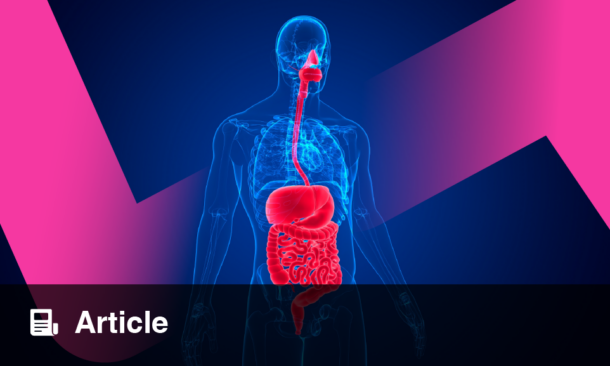‘ACTION Within Reach: Pioneering Solutions for Rare Diseases’ was the theme of the 12th edition of the European Conference on Rare Diseases and Orphan Products (ECRD) 2024, which took place in Brussels, Belgium, between the 15th–16th May 2024.
ECRD, the leading patient-shaped, patient-led, and patient-organised space, is co-organised by Orphanet and partner organisations of the European Organisation for Rare Diseases (EURORDIS-Rare Diseases Europe). The 2024 hybrid event saw approximately 300 in-person delegates and 400 attendees from around the world joining online to address the complex challenges faced by people living with rare diseases (PLWRD).
Considered the heart of the European Union (EU), Brussels provided the ideal backdrop for ECRD 2024, which set to focus on driving transformative change through policy, in light of the impending European election. Spanning the course of 2 days, attendees including patients and caregivers, policy makers, healthcare professionals, researchers, and representatives from both industry and the private sector, had the opportunity to attend a plethora of sessions delivered by 50 expert speakers.
In a pre-conference video, Virginie Bros-Facer, newly appointed Chief Executive Officer of EURORDIS, gave a short and impactful speech, highlighting how the conference provides a unique opportunity to influence the rare disease landscape. Whilst the challenges discussed during the event would be numerous and complex, Bros-Facer stated: “Together we can achieve transformative advancements in research, policy, and patient care.”
A key focus for ECRD 2024 was priority needs for PLWRD. To help make the event as accessible and inclusive as possible, all speakers introduced themselves by giving a short visual description of their appearance, and multi-language closed captions were available for the online audience.
To officially open the conference, Bros-Facer and Avril Daly, EURORDIS President, joined the stage. Daly welcomed delegates to the first in-person event since ECRD 2018, which took place in Vienna, Austria. Daly highlighted the special nature of the event, organised under auspices of the Belgian presidency of the EU council, and taking place in the heart of the EU. Daly commented that rare disease policy is innovative and dynamic, and emphasised the desire to shape goal-driven rare disease policies. She addressed the audience, stating: “It’s critical for your voices to be heard.”
Bros-Facer noted that the conference was taking place at a crucial time of change, with the approaching European election, and stated that the rare disease community looks to new European leaders to bring the Rare 2030 Foresight Study recommendations into fruition. Her hopes for the conference were to continue to build on momentum and comprehensive review of strategy for rare diseases; and shape the thinking of policy makers to encourage a more streamlined and proactive approach to addressing the unmet needs of PLWRD, and persisting inequalities across Europe. She discussed the need to harness this momentum for change, and to take bold decisions. She then drew attention to the Open Letter, informed by sessions at the 12th ECRD, with the aim of calling the next European leaders to develop a European action plan for rare diseases that bridges diverse policy areas, and streamline existing efforts with clear, measurable objectives. She reminded the audience that policies need to address the real needs of PLWRD, and encouraged attendees to get involved, commenting: “We can only be the change we want to see in the world.”
Video messages from both Frank Vandenbroucke, Minister of Health and Social Affairs for Belgium; and Stella Kyriakides, European Commissioner for Health and Food Safety, echoed the sentiments around the steps that have been taken to improve patient access to diagnosis, treatment, and care. Vandenbroucke stressed that it is crucial that rare diseases are kept on the European health agenda, that collaboration beyond borders will be pivotal, and a European action plan for rare diseases is needed to improve the situation for the approximately 30 million European PLWRD.
Kyriakides highlighted that integration of European Reference Networks (ERN) into national health systems; the new Horizon Europe Programme to advance research and innovation; and closing the distance to bring the European health data space to reality, to ensure PLWRD have access to, and control of, their health data in Europe, are key to improving access and care for patients, and will be crucial for research. Additionally, Kyriakides emphasised that PLWRD must have access to the best and most innovative treatments, irrespective of their disease, or where they live. She discussed the need for inclusion of patient organisations to better shape European policies on rare diseases, commenting: “In the field of rare diseases, collaboration is the key to success, and patient voices are essential.” Kyriakides concluded her address with an empowering statement: “Together, I truly believe we can deliver a brighter future for patients living with rare disease.” At the closing plenary, individuals were invited to the stage to formally sign the ECRD Open Letter, starting with Daly signing on behalf of EURORDIS.
Bros-Facer closed ECRD 2024 with a powerful reminder of the strength that lies within the collective voices of attendees, and how collaboration can drive change for the 30 million PLWRD in Europe.
The 12th edition of the ECRD provided a platform for collaboration amongst multiple stakeholders in the rare disease space to discuss solutions to challenges, advocate for change, and champion the need for access and equity in European policies, with PLWRD at the forefront of the discussions.
Defining Healthcare Experiences for Patients with Rare Diseases
PEOPLE living with rare diseases (PLWRD) face unique healthcare challenges that are often not captured by standard quality measures. With an increasing emphasis on patient-centred care, understanding their experiences is essential for improving service delivery and patient outcomes.
A scoping review, presented at the 12th ECRD, identified key healthcare experience domains for PLWRD, using patient reported experience measures. The review aimed to extract and collect categories and domains of patient healthcare experiences included in empirical studies that explored the views of PLWRD, and to study and assess existing questionnaires to establish whether they capture PLWRD healthcare experiences in a comprehensive manner.
The review utilised comprehensive searches on Medline, Embase, and Cumulative Index to Nursing and Allied Health Literature (CINAHL) with keywords related to rare diseases and patient experiences. Papers from 2005–2022 were retrieved, and a total of 61 studies were analysed. The Organization for Economic Co-operation and Development (OECD) Patient-Reported Indicator Surveys (PaRIS) domain was adapted and utilised for data extraction and analysis.
Results showed that quantitative methods dominated the study designs, with a substantial portion also employing qualitative and mixed methods. The review revealed that current instruments variably cover essential domains such as access (69%), co-ordination (72%), and people-centeredness (87%). Notably, safety and trust were less frequently addressed at 13% and 23%, respectively. The study also mapped 42 questionnaires against the domains and categories, and identified the Cystic Fibrosis Patient Experience and Satisfaction with Care Services questionnaire as the only one that covers all domains investigated as part of this review (11), with the highest number of categories (31/71).
This scoping review provides crucial insights into the healthcare experiences of PLWRD, utilising patient-reported experience measures to delineate the complexities and nuances of their interactions within secondary and tertiary healthcare settings.
The Evolving Experience of Patients with Rare Conditions
FEEDBACK from patients is crucial to improve healthcare delivery for rare conditions. A recent study presented at the 12th ECRD analysed changes in patient experience at the Royal Hospital For Children, Glasgow, UK, between the periods of 2018–2020 and 2021–2023.
A total of 130 questionnaire-based surveys were completed by patients and parents of children from 2018–2020, and 62 completed from 2021–2023. The survey explored six key themes: diagnosis, provision of information, availability of support, satisfaction with healthcare team, awareness and support for life-limiting conditions, and participation in research.
Results showed that 68% of patients reported being told little or no information at diagnosis between 2021–2023, compared with 46% in 2018–2020 (P=0.19), and the proportion of current adequate understanding also decreased from 66% to 53% (P=0.09). A total of 72% of respondents were aware of support groups, compared to 59% prior (P=0.09), and membership increased from 55% to 67% (P=0.13). Overall satisfaction with the healthcare team also increased from 60% to 70% (P=0.18).
Support for children with life-limiting conditions increased from 8% to 23% (P=0.01). In the latter survey, 73% of patients had experienced remote consultations, with only 10% and 20% satisfied with video and telephone consultations, respectively. Hospital appointments were cancelled in 13%, therapy appointments in 17%, investigations in 9%, and surgeries in 13% of respondents during the pandemic.
The study provides insights into areas of improvement and concern in the management of patients with rare conditions. Addressing the decrease in information provision observed since the pandemic will enable healthcare providers to deliver patient-centred care, enhancing their quality of life. Further surveys will be required to track changes in these benchmarks and improve patient services.
Lynch Syndrome and Thyroid Nodules: A Single Centre Experience
LYNCH Syndrome (LS) is a genetic condition linked to mutations in MLH1, MSH2, MSH6, PMS2, and EPCAM genes, increasing the risk of colorectal cancer and other malignancies, with few reported cases of thyroid cancer in patients with LS.
Research presented at the 12th ECRD aimed to investigate the presence of thyroid nodules in patients with LS and explore the association with genetic features of the disease.
A retrospective and descriptive analysis was conducted on patients with LS at the Center for the Diagnosis, Treatment and Prevention of Digestive System Diseases (CEMAD), Agostino Gemelli IRCCS University Hospital Foundation, Rome, Italy. The study evaluated LS disease characteristics, gene mutations, and previous thyroid disease history. Most patients underwent thyroid ultrasound, with nodule cytology performed when necessary.
Among 139 patients with LS (52 male; 87 female), 103 (74%) underwent thyroid ultrasound, with seven patients (5%) having a history of thyroid disease. Thyroid nodules were found in 62 patients (60%) who had ultrasound exams, and nine of these (14%) had suspicious features leading to fine-needle aspiration biopsy. Cytologic analysis showed seven cases (78%) of benign nodules (TIR2) and two cases (22%) of low-risk indeterminate lesions (TIR3a). Among patients with nodular thyroid disease, the majority were MSH6 mutation carriers (36%), followed by MSH2 (32%), MLH1 (24%), and PMS2 (7%).
Overall, there was a high prevalence of thyroid nodules in patients with LS, especially in those with the MSH6 mutation. It is recommended that patients with LS undergo at least one thyroid ultrasound examination to detect nodular thyroid disease. Further systematic investigations are needed to understand the prevalence, features, and malignancy risk of thyroid nodules in this population.
Unveiling the Epidemiological Landscape of Rare Diseases: A Demographic Analysis by Medical Domain
ACCORDING to new findings presented at the 12th ECRD, 4.40–5.28% of the general population is affected by rare diseases.
The scarcity of population-based and epidemiological studies examining rare diseases delays diagnosis and the early implementation of evidence-based care. Therefore, an enhanced understanding of the demographics of rare diseases based on medical specialty is required to improve patient care.
Researchers used Orphanet, an epidemiological database that collects information on rare diseases, including medical specialty, age of onset, and epidemiological data, from publicly available medical literature and collaborations with medical experts. The analysis of rare diseases from the Orphanet database included 6,349 rare diseases until February 2024, of which 3,733 were included in the study. The research group established exclusion criteria, which included if the disease’s medical specialty fell under cancer, infectious disease, or poisoning; assigned “unknown” point prevalence; no assigned epidemiological data available; and epidemiological indicator is not point prevalence. The study analysed the global point prevalence and age of disease onset for every included medical category in the Orphanet database.
Results from the analysis showed that of the 3,733 rare diseases, rare developmental defects originating during embryogenesis represented the most significant single category, with a prevalence of 37.1%, followed by rare neurological diseases at 20.2%, and rare inborn errors of metabolism at 7.6%. Furthermore, the onset of rare diseases occurred frequently during early development, most commonly in the neonatal period (30.7%), followed by infancy (25.3%), and childhood (14.7%).
The findings from this study revealed a narrower global point prevalence of rare diseases compared to previous studies. However, this study demonstrated more precise demographics of rare diseases. Nevertheless, the insights into the epidemiology of rare diseases remain limited. A more detailed understanding of rare diseases across medical specialties can lead to targeted allocation of resources and enhanced intervention of specific diseases.
Prevalence of Rare Diseases on the Rise in Geriatric Population
THE global population of older individuals living with rare diseases (RD) is on the rise, a trend driven by both an ageing population and advancements in medical science. This growing demographic presents unique challenges for patients and healthcare providers alike, necessitating a greater awareness of the complexities involved in caring for this particularly vulnerable group.
A recent study presented at the 12ᵗʰ ECRD utilised data from the Veneto Region Rare Disease Registry (VRRDR) to explore the epidemiology of older individuals living with RD. The study focused on the number of patients diagnosed with RD in old age, and those who transitioned from adulthood into old age, estimating the prevalence of older patients with RD as of December 31ˢᵗ 2022. Additionally, the study examined the composition of therapeutic plans for these patients.
The findings revealed that during the study period, 8,975 patients were diagnosed with an RD after the age of 65 years. Furthermore, 4,214 individuals who were diagnosed with RD in their childhood or adulthood transitioned into old age. As of December 31ˢᵗ 2022, the study area had 9,508 residents with RD aged ≥65 years, accounting for 20.8% of all patients with RD in the Veneto region.
The most prevalent RD groups among elderly patients included systemic or rheumatologic diseases, neurologic disorders, and skin diseases, affecting 27%, 25%, and 9% of the geriatric RD population, respectively. Among the prevalent cases, 1,519 patients aged ≥65 years had therapeutic plans specifically related to their rare conditions. The most commonly prescribed medications were those targeting the nervous system (27.8%), the alimentary tract and metabolism (12.8%), and anti-neoplastic and immunomodulating agents (11.6%).
The study concluded that, as the number of older patients with RD continues to grow, there is a pressing need for geriatricians and general practitioners to be actively involved in RD care, and for specialised training programmes. Further research is essential to identify the unmet care needs of older patients with RD, and to develop health policies that effectively address the unique challenges faced by this emerging patient group within the RD population.
Gaps in Awareness and Adherence in Patients with Homozygous Familial Hypercholesterolaemia
A STUDY presented at the 12th ECRD revealed substantial gaps in awareness among patients with homozygous familial hypercholesterolaemia (FH), a rare genetic disorder that dramatically elevates cardiovascular complications due to a defect in cholesterol metabolism, leading to premature mortality.
Effective management can prevent adverse outcomes. However, despite the availability of effective therapies, individuals with homozygous FH can face challenges in managing their condition due to lack of awareness.
The study assessed awareness and knowledge among patients with homozygous FH regarding FH and its treatment options, with a particular focus on the patient’s understanding of the disease, its severity, and their adherence to therapy.
A 48-item survey was conducted face-to-face with 40 patients with homozygous FH at the outpatient clinic of Ege Üniversitesi Department of Cardiology, Izmir, Türkiye. Results showed that awareness of the disease was low, with only 22.5% of patients correctly identifying their condition as FH. The majority of patients referred to their condition under the generalised term of “high cholesterol,” indicating a significant lack of understanding regarding the genetic and clinical specificity of FH. Additionally, while two-thirds of patients acknowledged having a genetic disorder, only 22.5% were aware of the low-density lipoprotein (LDL) cholesterol target of <55 mg/dL recommended to mitigate the heightened cardiovascular risks associated with homozygous FH. Furthermore, only 55% of patients were aware of their latest LDL levels, indicating a disconnection from ongoing treatment monitoring.
Therapeutic adherence rates were also reportedly low, with 15% of patients indicating poor adherence to pharmacotherapy, 17% to prescribed physical activity, and 69% to dietary modifications. Additionally, 21% acknowledged non-compliance with broader lifestyle modifications, including smoking cessation, which is critical for cardiovascular risk reduction in FH. In terms of patient engagement and advocacy, 83% were not engaged with, or aware of, patient advocacy groups, and nearly half showed substantial reluctance to participate in randomised clinical trials for novel and effective LDL-lowering therapies, despite previous involvement.
These findings highlight significant gaps in patient awareness and adherence to treatment for homozygous FH. This calls for targeted educational interventions to raise awareness, enhance patient engagement in their own care, and promote understanding of the disease severity and its implications. Further research should explore the barriers to effective patient education, promote trial involvement, and encourage participation in patient advocacy groups, as a resource that could significantly enhance patient support and education.







